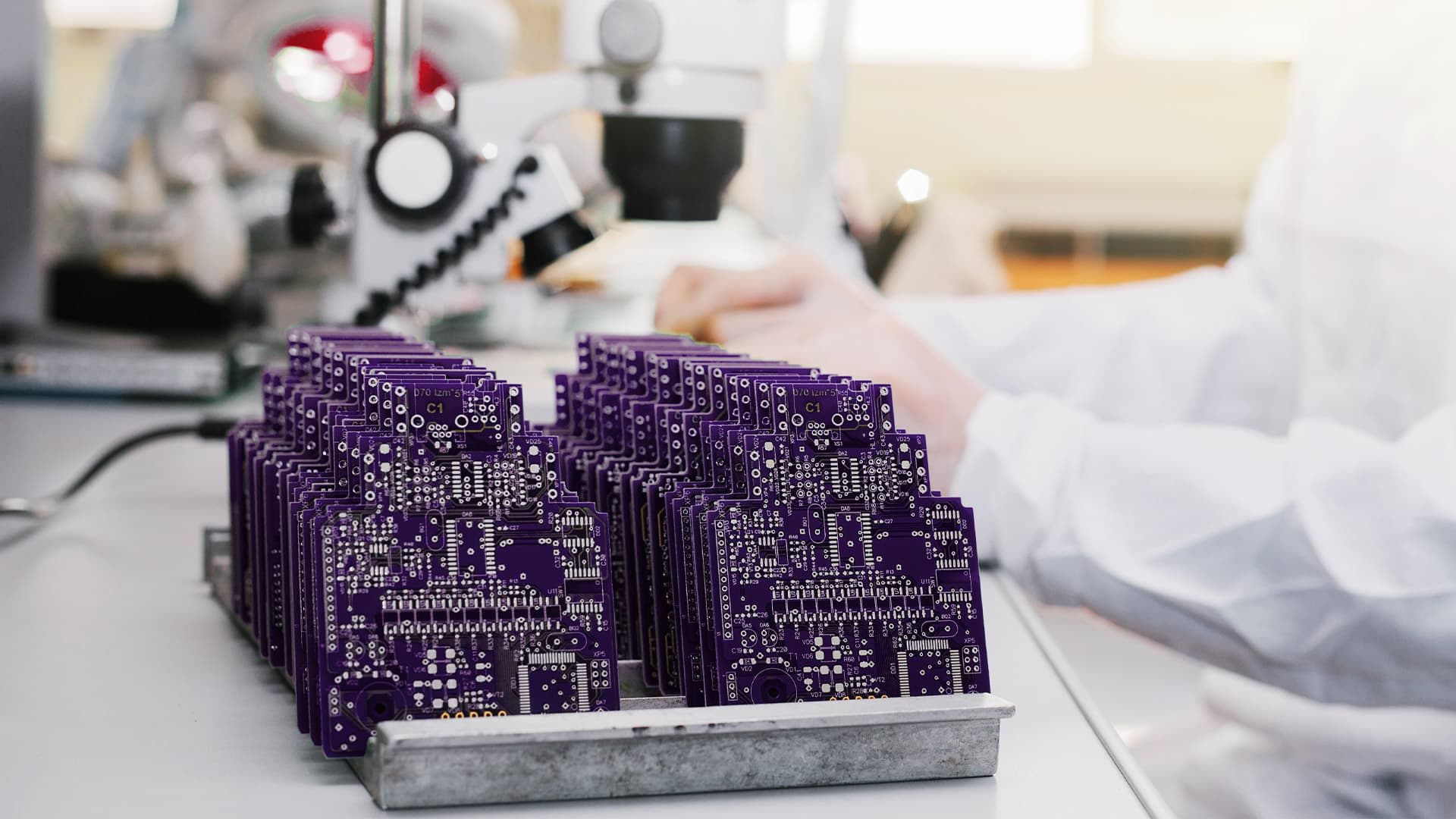QDID™
Our patented physical unclonable function (PUF) semiconductor design is the most secure hardware root-of-trust available to create unforgeable device identities and cryptographic keys.
What is QDID™?
QDID stands for Quantum-Driven Identity. QDID is a physical unclonable function (PUF) semiconductor design that helps semiconductor companies to secure their chips. It provides a unique device identity and cryptographic keys that cannot be counterfeited, hacked or breached making it one of the world leading hardware PUF root-of-trust for IoT devices..
That’s because silicon is structurally unique at the point of manufacture. By measuring and authenticating device identity at the quantum level, QDID offers unforgeable identities for the highest level of IoT security available.
QDID can work independently in an IoT system, but combined with QuarkLink, it offers the highest standard of security available.
Scalability unlocked
Our PUF chip design is cost-efficient and more secure for building MCUs, ASICs and other semiconductor products. These savings add up along the supply chain. Scalable IoT security is now a reality.
Secure PUF
As a security mechanism built on quantum tunnelling, QDID’s on-demand identities and key material are unforgeable. This is the most secure hardware root-of-trust in the market.
No key injection
Key material generation takes place entirely within QDID, eliminating the need for key injection or secure storage. So no more HSMs or third parties introducing cost, error and risk.
Device lifetime assurance
A quantum-driven security system can accelerate today’s device development cost-effectively – and protects better against future threats of the post-quantum era.
QDID beats other PUFs at IoT device security
Many PUFs (physical unclonable functions) measure physical parameters to define device identity. We take physical measurement even further. QDID harnesses atomic variability in silicon at the quantum level to generate key material and device identities on demand, with no need for key injection or secure storage.
Making chips secure is a challenge due to limited space, energy consumed and long product cycles. There are also costs, errors and security risks of third party key injection. This holds back device scalability.
By harnessing quantum tunneling effects, QDID generates keys and identities from silicon properties. The design saves on resources, including space and memory components, to substantially improve cost-efficiency and value along the IoT device supply chain.

The highest security standard
QDID brings many benefits over other PUF models.
Genuine randomness
Software-generated keys are deterministic and not truly random. A hardware-based, quantum-driven identification model is high entropy, making key and identity generation unpredictable and irreplicable even by quantum computers.
Get multiple keys
Generate multiple, uncorrelated keys to generate unique, unforgeable device identities. You can even repurpose device function and change ownership thanks to easy, on-demand key management.
Easy building blocks
As a building block for IoT device security, QDID integrates easily into standard CMOS. Embed QDID into your supply chain early and reduce security costs throughout the supply chain.
Zero-touch
QDID offers fully automated key generation in an enclosed system. With no key injection from HSMs and no other third party involvement, there is lower risk and lower costs in delivering security.
Tamper-proof
Our cutting-edge, patented mixed-signal chip design means sabotage is no longer a threat. No more side-channel attacks, counterfeiting or risk of stolen keys.
Cost-effective
QDID’s silicon-based, quantum-driven process provides a susbtantial ROI on semiconductor design. This means lower overheads, more scale and faster time to market.
Embedding QDID into your IoT device raises security strength for everyone across your customers’ product supply chain.
QDID has endured many tests in accordance with National Institute of Science and Technology (NIST) standards.
It is proven impervious to glitches, temperature attacks, aging, remanence decay and tampering and passed rigorous standards regarding voltage, temperature and process nodes. Talk to CQ experts for more about testing.

How quantum tunnelling works
And how does it benefit the modern world of IoT Security?
At the atomic level, electrons can behave both as particles and waves, and objects can be in different states at once. Particles can pass through energy barriers they don’t have the energy to surmount. The barrier thickness has to be infinitesimally small, around 1/40,000 the width of a human hair, for this phenomenon to occur. This is quantum tunnelling.
These dimensions occur readily in the transistors of CPUs in a laptop or smartphone. Transistors are like switches, controlled by applying electric current to their gate terminals. There’s an insulating oxide layer several nanometers thick between a gate and the rest of the device where electrons can tunnel through to create an infinitesimal electric current. The way transistors are manufactured makes it impossible to perfectly reproduce these oxide layers at the atomic level, creating a tiny yet measurable difference in a gate’s leakage current.
The basis of QDID’s security is in the accurate and repeatable measurement of these gate tunnelling currents. The atomic structure of the transistors becomes the chip’s unique fingerprint, and is therefore unforgeable and unpredictable, even for a quantum computer.

Atomic variability for unforgeable identity
Oxide layer fluctuations arise from transistor manufacturing variations.
Even a tiny layer variation creates a detectable change in tunnelling current. These minute currents require state-of-the-art measuring techniques (using femtoamps or 10-15 Amps) comparable to measuring the distance between Earth and Pluto with 1-metre accuracy.
The imperfections and random nature of the atomic positions of the oxide and surrounding layers create unique devices. Simulating these structures for forgery would take vast computing power unachievable in our lifetime – even with a quantum computer.
A typical QDID array contains hundreds of transistor pairs whose gate currents demonstrate huge variability. These data provide the physical identity to enable end-to-end security in connected devices. This is a patented technology that no other semiconductor company uses for security verification and unique identity generation.
Image Source: C. L. Alexander and A. Asenov, “Statistical MOSFET current variation due to variation in surface roughness scattering,” 2011 International Conference on Simulation of Semiconductor Processes and Devices, Osaka, 2011, pp. 275-278, doi: 10.1109.

QDID is part of Q:Architecture™
Using QDID as your secure hardware root-of-trust provides your IoT devices great security.
But for the best IoT security, use QDID together with QuarkLink™ to secure devices at the highest standard.
QDID is the hardware counterpart to its sister software solution QuarkLink. Together they form Q:Architecture, a security architecture that delivers uncompromising security and easy device management from chip to cloud.
Scalable IoT Security is here
Integrate QuarkLink into your existing IoT network and onboard devices in minutes.
Talk to one of our security experts to discover how we can help you.
Additional resources
What is secure provisioning of an IoT device and why is it important?
This is a white paper on secure IoT device provisioning, and why it is important.
Building trust in the IoT through security standards, testing, and accreditation.
A comprehensive overview of recent developments.
Building trust in IoT security through legislation
A guide to how IoT security legislation is developing around the world.

